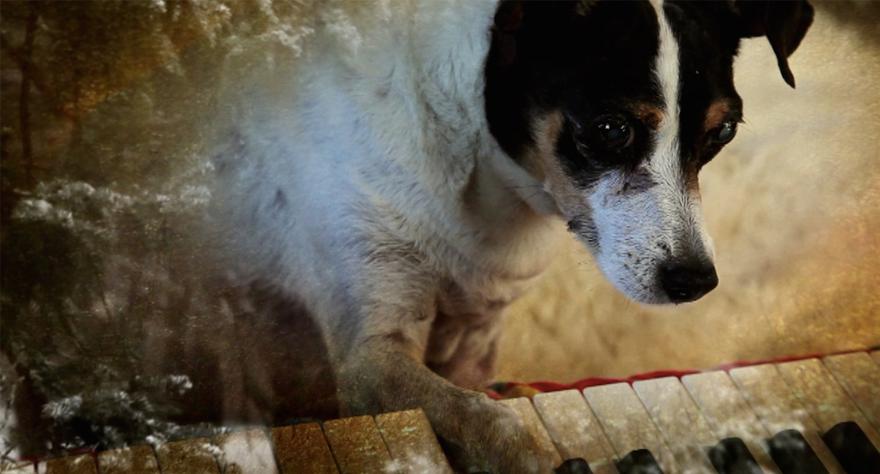NYFF 2015: Heart Of A Dog

Once one gets past Laurie Anderson’s peculiar narration, replete with Shatner Pauses, one will find much to munch on in the experimental artist’s dreamy documentary, Heart of a Dog. The mind might even wrap itself around the notion of oneness itself. Drinking in Anderson’s process as a well of sweet, captivating connectivity can spark thoughts on what makes us who we are, the most philosophical question of all. “Where is the brilliant philosophy?” repeats one of the stroboscopic title cards, along with a line that had a profound effect on me the moment I read it: “I had promised my heart so many things I had never delivered. It lived inside me now, suspicious and small.” Relate to the power of Anderson’s poetry, and you’ll start thinking the answer to that first question is being projected right in your face.
Anderson weaves her thoughts together like a person in deep thought, and unpacking her digressions is like Christmas come early for dreamers, dog lovers, and artists. As the title implies, much of the documentary is Anderson’s expression of tender love and inquisitive curiosity about her Rat Terrier, Lolabelle. What she must be thinking about when a hawk flies down towards her. The activities she did when she became blind. It’s an inquisition of a relationship, which in turn grows tangents that connect Homeland Security motto’s with something Wittgenstein might write, the immediate post-9/11 mood in Anderson’s native New York, and her love of Francisco Goya’s ‘The Dog’ from his Black Paintings series. Towering above everything is a sense of closure (not spoiling it!), which steeps the whole project in a tall glass of melancholic tonic.
Anderson has a lot of fun with the aesthetics as well, which makes Heart of a Dog all the more attractive. Superimposing Goya’s “gold void” over a variety of personal images, for example. Or remembering a dear friend who died much too young, with animated hammers hammering in his ears after his brain had already flatlined. It begins with the artist recalling a dream she once had, and ends with a precious memory regained; everything in between is an avant-garde hybrid of style, braided in deeply personal and profoundly pensive reflections. The only obstacle for total immersion is, ironically, Anderson’s own narration. Get past that, though, and you’ll be swimming in the lakes of a riveting, multiplex mind. So refreshing.
